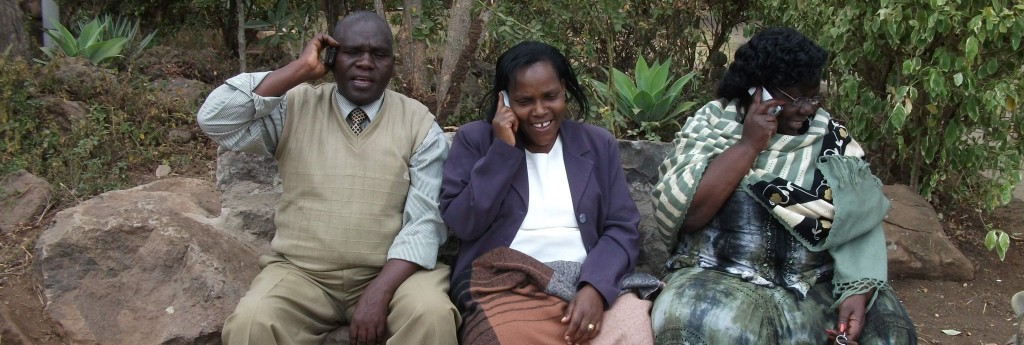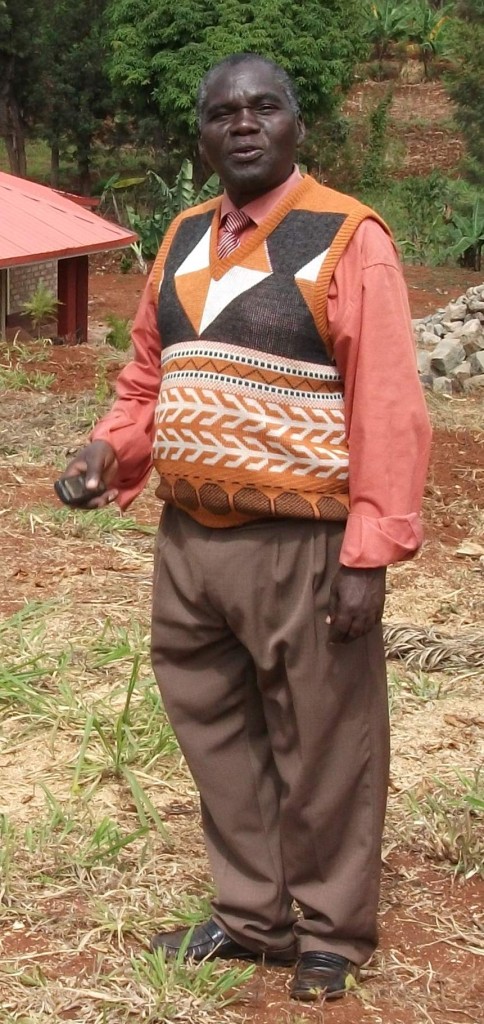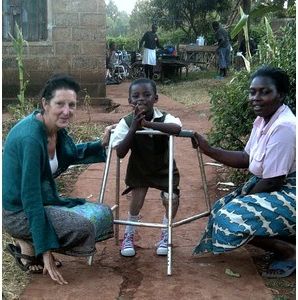I’m pleased at last to be able to inform you that we are moving into the next stage of our commercial development, and to report that the Peacemakers’ deeds have been registered in the new name of Peacemakers CBO (Community Based Organisation).
I want to acknowledge and thank Pastor Sammy, Grace Kaumer and Lucy Njiru for standing in the offices of acting trustees over the past few years. We are now at the stage of getting a management team together to be responsible for the various projects that are already underway. Christine has given a report of some of the activity at the present time.
*********
Peacemakers Kenya, March 2019.
Last night, we had the first rainfall in months. We have been trudging in thick dust and my hair was stained orange from the red-soil. Our bore hole is empty; the shamba is dry. Today has been hot again but people are thanking God for the looming clouds and the promise of the long-awaited arrival of the March rains. There has been the usual frantic diversion from all other activities other than preparing the plots for planting.
Since January, we have been trying to do some urgent necessary repairs on the site and in the house. The house needs a fair amount of painting and refurbishment as we are trying to make it smarter for accommodating guests. There are currently 5 bedrooms (see the Air B&B website for Peacemakers homestead) and we are creating another one by re-locating the library. The dust has been sweeping in relentlessly through the windows and under the doors. We have yet to complete putting locks on every guest door but we have made a new front door which is more secure than the last. Each room needs furnishing with a simple clothes storage place; each sink needs a good plumber; each light fitting needs replacing.
George, the German Shepherd no. 2 grew so fast that he could not share with his uncle, Jack, so Wahome the carpenter made him his own kennel. It took nights for me to persuade him to get inside! Along with a local mongrel, Suki, the three dogs make excellent night watchmen, barking in chorus when they hear a strange noise in the night. We have also installed security cameras.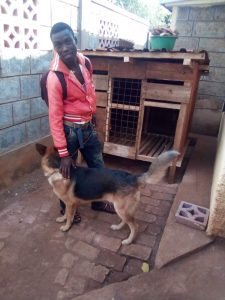
My oldest pet, Gus the cat has been joined by tiny tabby Yvette, bought really to chase away the rats from the chicken shed. In fact, we have had to demolish one shed in favour of a new structure with a solid floor. We cannot afford to lose chicks from predatory animals as we so want the poultry project to be successful.When Cameron came last November, he agreed with Isaac which projects should be concentrated on. Cameron left us with an investment for the chicks. So the chicken shed will soon be officially opened as “Cameron House”. Doesn’t it look smart?
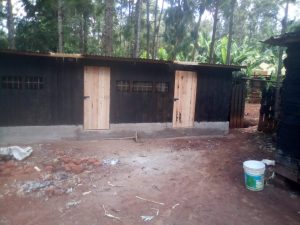
Three new piglets arrived 2 weeks ago, chasing behind the previous litter of four. Isaac has bought a new boar with the proceeds to avoid inbreeding.
We still only have one male goat, William, seen her kissing with Suki.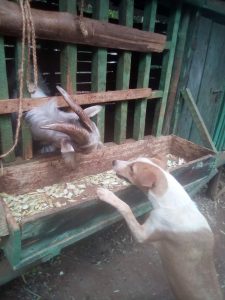
Our cow Mpwenda looks huge but has still not produced…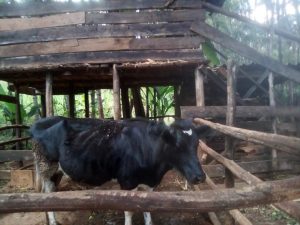
The whole of the old piglet houses needs renovating for surplus pigs and extra goats, in time.
The greenhouse has suffered from wilt so we need to find a sponsor for soil bags to get back onto our red and yellow peppers project. Meanwhile, we will plant managu (nightshade) which are delicious indigenous greens inside. We have had no water to irrigate and plant our tree nursery. We were thrilled therefore to get a donation from the Richard Taylor Foundation for a solar water pump; to be installed in the next week… just in time to make the most of the rain.
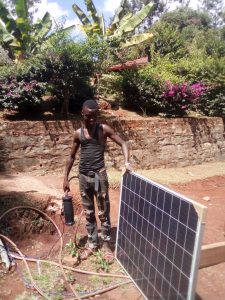
We have been struggling to pay extortionate electricity bills hence our aim is to cut off from mains power. KPL (Kenya Power and Lighting) has the monopoly for supply throughout Kenya. I have spent so much time complaining about high bills like everybody else… We have an outstanding accumulated bill of around £390, they say, and before we are allowed to cut off their supply we have to wait until we can install solar panels.
I stay and live on site in the house. There is a youth called Sam who sleeps in the clinic as he has no family member to house him. During the weekdays, we have Wanjiko to cook and help me clean, Shadrack the computer trainer who also cuts the hedges; Dennis who looks after the livestock. Gitonga works on the tree nursery but helps with everything, Lutigia, alias Songo, digs like a machine, helps with the animals or building tasks; Murimi helps to clean the chickens, sheep and goat. The latter three are mentally and physically challenged.
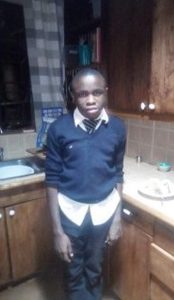
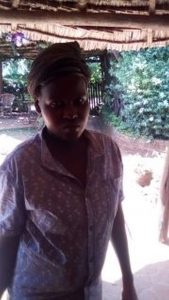
We continue to host community groups and training. We take bookings for church groups and others retreats and social functions. We have had a steady flow of people both young and old to do computer packages. Next week, our friend Fanta’s daughter is one year old so he has his thanksgiving celebration here with the current and former M.Ps and 7 Members of the County Assembly as guests. We have to call in extra cooks and helpers for such occasions.
We had a meeting to dissolve the former trustees and are waiting for the Lord to raise up a mission led team, committed to the Peacemakers mission. So currently, we are operating under the covering of Sammy Gitungu. In the last prayer time, we drew up a list of 19 people to invite to come to pray for the way forward. We also value your continued prayers. We need the Holy Spirit to stir up Peacemakers to come to our monthly prayer meetings. We are praying that God will continue to bless us and help us prosper to fulfil His plans.
*****************
You can see from the report the progress that we’ve made but we still have costs to meet. So, if you feel led in any way to support the various needs we have, particularly in managing the electricity and installation of the solar panels, that would be absolutely fantastic. The easiest way to send your donation, however big or small, is to the Peacemakers’ account using our Donation Form , Standing order mandate or in the post to my home address and I will transfer it across to Kenya.
Love and appreciation as always, Brenda.
